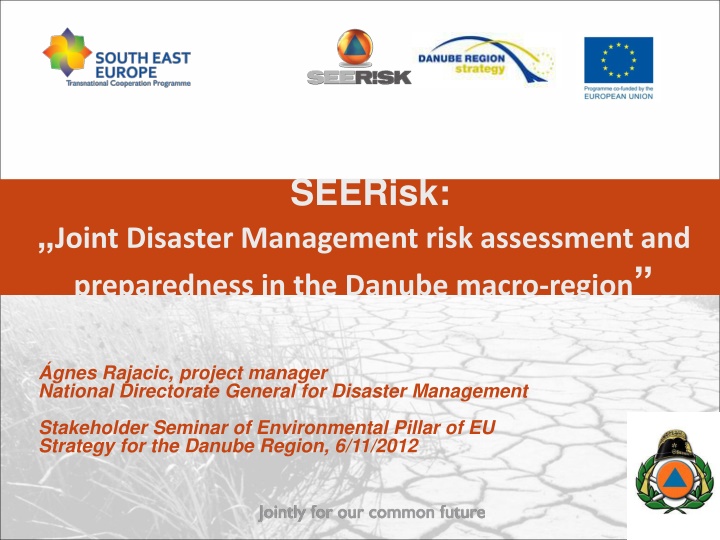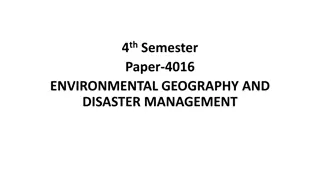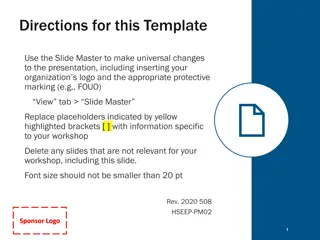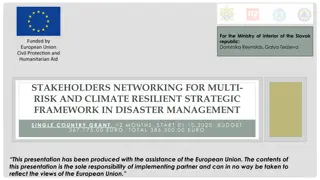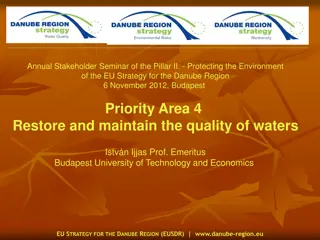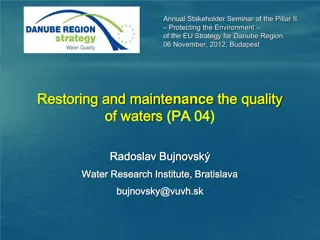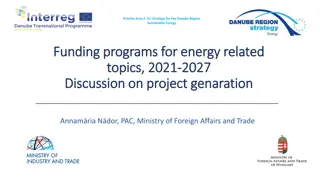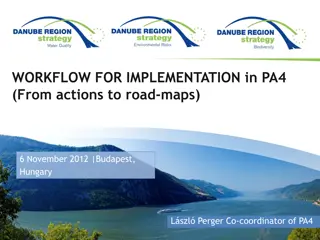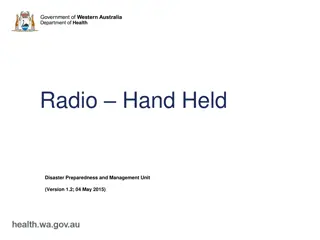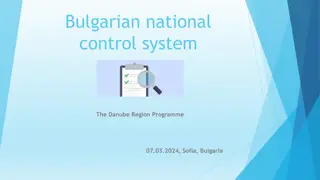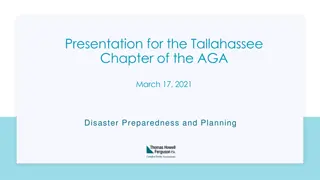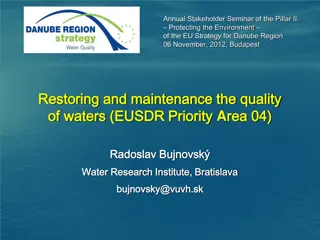SEERisk: Disaster Management and Preparedness in the Danube Macro-Region
Joint Disaster Management project SEERisk aimed to assess and enhance preparedness in the Danube macro-region, involving multiple stakeholders in environmental disaster risk reduction. The project, led by gnes Rajacic, Project Manager at the National Directorate General for Disaster Management, focused on key objectives, steps, and partnerships across several countries in Southeast Europe. Highlighting the challenges posed by extreme weather events and climate change, SEERisk emphasized the importance of harmonized regional plans to address disparities in awareness, resilience, and response capabilities at local levels.
Download Presentation

Please find below an Image/Link to download the presentation.
The content on the website is provided AS IS for your information and personal use only. It may not be sold, licensed, or shared on other websites without obtaining consent from the author.If you encounter any issues during the download, it is possible that the publisher has removed the file from their server.
You are allowed to download the files provided on this website for personal or commercial use, subject to the condition that they are used lawfully. All files are the property of their respective owners.
The content on the website is provided AS IS for your information and personal use only. It may not be sold, licensed, or shared on other websites without obtaining consent from the author.
E N D
Presentation Transcript
logo_DRS_2011_general SEERisk: Joint Disaster Management risk assessment and preparedness in the Danube macro-region gnes Rajacic, project manager National Directorate General for Disaster Management Stakeholder Seminar of Environmental Pillar of EU Strategy for the Danube Region, 6/11/2012
logo_DRS_2011_general Table of content 1. Background & Rationale 2. Objective of SEERisk 3. Steps of SEErisk
logo_DRS_2011_general 1.Basic facts Project preparation: April 2011- April 2012 Project started: July 2012 Funding: South-East Europe programme Project partners:18 (municipalities, disaster management bodies, universities in the region) Countries involved: Austria, Bosnia and Herzegovina, Bulgaria, Hungary, Serbia, Romania, Slovakia, Slovenia, Croatia Lead partner: National Directorate General for Disaster Management, Hungary Project pilot areas: 6 (Srbac, Si fok, Temerin, Trnava, Velingrad) Received DRS label
1. Disaster Risk Assessment in the EU March 2009 Annoncement of the EU Commission Conception on the prevention of natural and man made disasters November 2009 EU Council Conclusion No. 15394/09 Conclusion on a Community framework on disaster prevention within the EU April 2011 - EU Council Conclusion No. 8068/11 on Further Developing Risk Assessment for Disaster Management within the European Union
Extreme weather South Eastern European (SEE) region: Common challenges and territorial coherence Climate change Extreme climate events wide range of risk types (flashflood, thunderstorm, draughts etc.) Challanges: low level of awareness, weaker preparedness and territorial planning, institutional gaps
logo_DRS_2011_general 1. Rationale National requirements/preparadness vs local authorities ability to response Local communities: regionally uneven awareness Local authorities: varying degree of resilience/preparadness same event may result in different magnitude of damage in SEE region Goal: incorporate climate change into harmonized regional plans for SEE region
2. Objective of the Project Develop a consistent risk assessment and emergency preparedness tool in SEE countries at national and local level, especially in case of disasters intensified/created by climate change. by formulating a common risk assessment methodology for natural hazards intensified/created by climate change enhancing the quality of decision-making in disaster management by know-how transfer and to review the local plans and regulations upon which the disaster communication plans are built
3. STEPS National level II. Preparedness assessment I. Risk assessment Risk map Information Local level Risk map Information
3. RESULT logo_DRS_2011_general From the merge of the outcome of I. and II. Examine the effectiveness of DM III. Carry out a strategy action plan at local level.
Work Package 3 Risk Assessment Aim: to produce a commonly elaborated methodology on the assessment of climate change triggered risks for the SEE area.
WP3 3.1 Elaboration of a commonrisk assessment methodology 3.2 Mapping and risk assessment of the pilot areas WP3 Risk mapping and assessment 3.3 Analysis of social awareness and authority regulation of the pilot areas 3.4 Guideline on climate change adaptation & risk assessment
WP3 Risk assessment 3.1 Common definition of harmonised methodology for risk mapping and assessment. 3.2 Execution of risk mapping and assessment in the pilot areas (PA) 3.3 The social awareness on emergency situations shall be surveyed analysed and discussed within a PA. Comparison of social awareness and risk assessment results. Analysis on the coherence of local authority regulation and relevant territorial and sectoral planning documents with the disaster management exposure and plans. 3.4 Comparison of different PA risk assessment and social awareness results. Prevention and mitigation advices.
Work Package 4 Joint preparedness for climate change caused risk Aim: to enhance the quality of decision- making in disaster management by know- how transfer and to review the local plans and regulations upon which the disaster communication plans are built
WP4 4.1 Workshops on emergency management issues 4.2 Collection of GIS best practices in emergency mgt. WP4 Joint regional preparedness 4.3 Joint simulation field-exercises (at 5 pilot areas) 4.4 Common emergency communication strategy
WP4 Joint regional preparedness 4.1 Thematic technical internal workshops (4), public forums will be organized on emergency prevention and mitigation issues in order to enhance joint preparedness by know-how transfer. 4.2 Collection and know-how exchange of best practice applications, workflow or projects based on GIS software. 4.3 Planning, organising and execution of joint disaster management transnational field-exercises. 4.4 Analysis of present emergency communication and public information procedures (SWOT) of the countries and elaboration of a common guideline to improve the coordination of emergency cases with transnational character.
Thank you for your attention! Agnes.rajacic@katved.gov.hu Phone: +36 1 469 41 18 Mobile: +36 20 929 24 47
